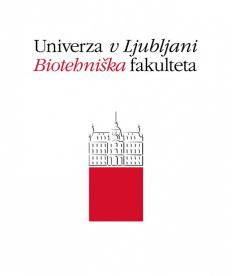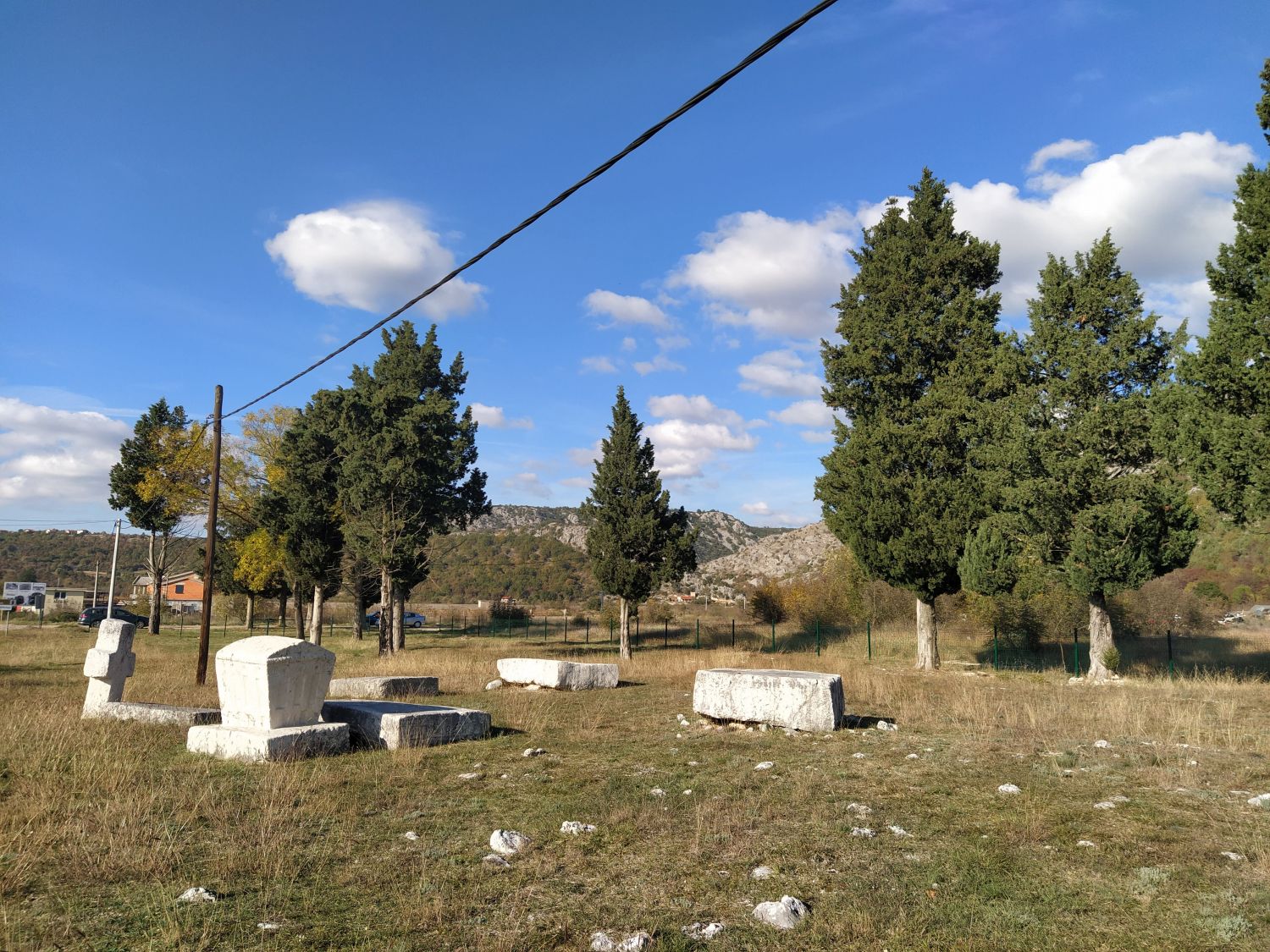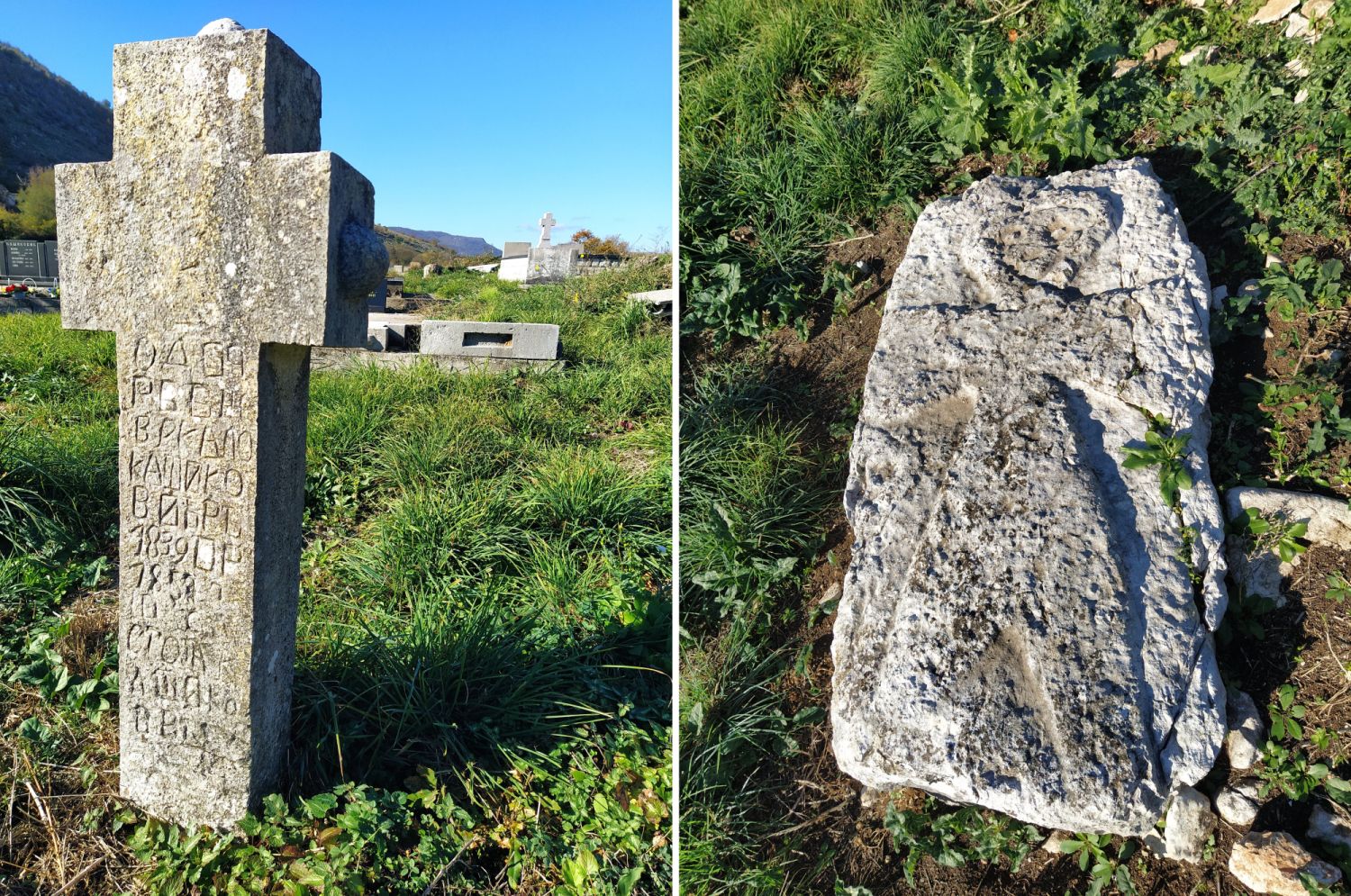Spatial and environmental reconstruction of medieval landscape: Herzegovina case study medieval BiH
Principal Investigator at ZRC SAZU
Saša Čaval, PhD-
Original Title
Prostorska in okoljska rekonstrukcija srednjeveške pokrajine: primer Hercegovine
Project Team
Žiga Kokalj, PhD, Aleš Marsetič, PhD, Tatjana Veljanovski, PhD, Liza Stančič, PhD, Luka Škerjanec, Nina Caf, PhD, Maja Andrič, PhD-
Project ID
N6-0284
-
Duration
1 October 2022–30 September 2024 -
Financial Source
Slovenian Research Agency

Partners
Biotechnical Faculty
Stećci are medieval tombstones used between the 12th and 16th centuries in the Western Balkans. Out of over 72,000, more than 60,000 are scattered throughout the province of Bosnia and Herzegovina. Due to their nature, stećci are a rich material source, representing the Balkans' medieval plural culture. Although erected in a geographical area known for many different ethnic and religious groups, these tombstones are not attributed to any of them and have always been considered mysterious monuments without a clear affiliation. It is important to study these tombstones together with other aspects of human life, the environment, and the landscape in order to avoid the trap of unfounded interpretations and gain a better understanding of stećci. We envisioned the ERC project as an all-encompassing investigation of the medieval world associated with the stećci phenomenon: the landscape, the natural environment, individuals and communities with their shared identities and rituals, as well as social memory, which has preserved some elements of earlier cultures far into the future and to the present.

Stećci near town Stolac in Herzegovina.
Environmental and spatial research within the humanities, including archaeology, is rare in the Western Balkans despite global archaeology adopting numerous and diverse high-resolution techniques from various scientific fields into its own research. What was the landscape like during the medieval period? Which paths were important, and why? What impact did the environment and climate change in the Middle Ages have upon the landscape and the communities that lived in that landscape? In what ways were people aware of climate change, and how did they react to it? These are just a few questions with a dearth of scientifically supported answers. Indeed, there are stories, oral histories, poems and short stories, even historical documents, but not all of these sources answer our research questions. Therefore, the adapted project will rely on state-of-the-art environmental and spatial studies and seeks to reconstruct the medieval landscape of Herzegovina –an area considered the cradle of stećci phenomenon.

Stećci in Milovići village near Bileća in Herzegovina.
WP1 – Culture
Societies regularly integrate their memories and landscapes by memorizing different locations and their meaning. Stećci are one of the important mechanisms of constructing, communicating and reproducing the societal memory. The largest work package will therefore be dedicated to recognizing the elements of cultural landscape that define societal networking. Those elements allow us to understand repeated cultural reconstruction of memory and common perception of a place far into the future.
WP2 – Landscape
Even though there are numerous necropoli containing stećci in the Western Balkans, the settlements related to them are mostly unidentified. With the help of historical data, excavations, sampling from two archaeological sites and multimethod analysis of spatial dynamics we will reconstruct the medieval landscape. Anthropological and ethnographical knowledge will allow us to reconstruct land use. The settlements related to stećci will be identified with spatial analyses. We will also look into development of necropoli in relation to those settlements and relationships between the settlements themselves. The availability and management of environmental sources will be assessed as well.
WP3 – Environment
Palynological and geoarchaeological assessment of Dabar and Nevesinje polje will be carried out to illustrate the complexity of human-environment interaction and specific ways the medieval communities changed their surroundings. Palinologic analysis will allow us to reconstruct vegetation development, which makes it a possibility to assess human influence on environment.